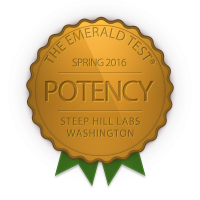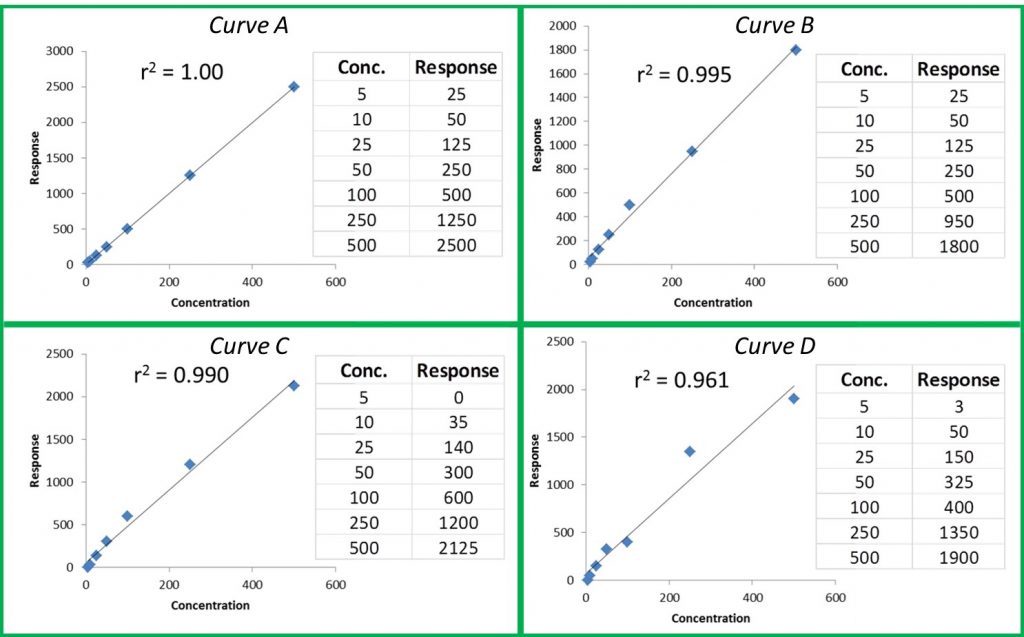This is the first piece of a regular column that CIJ has been so kind to allow me to write for their publication. Some readers might recognize my name from The Practical Chemist column in this publication. Since the inception of that column, I’ve finally taken the plunge into the cannabis industry as chief technical officer of Emerald Scientific. Unlike The Practical Chemist, I will not spend the entire first article introducing the column. The concept is simple: while I find the textbook-esque content of The Practical Chemist scintillating, I have a feeling that the content is a little too heavy to spring on someone who is looking for engaging articles over their precious coffee break. Instead, The Nerd Perspective will consist of less-technical writing focusing on my experience and insights for the cannabis industry as a whole. But don’t worry – I’m sure I will not be able to refrain from technical jargon altogether.
To kick off the column, I want to talk about instrumentation for ‘instant’ cannabis potency testing. At this point, it’s common knowledge in the cannabis analytics industry that the most accurate way to test cannabis potency is through extraction then analysis by HPLC-UV. I agree wholeheartedly with that sentiment, but HPLC analyses have one drawback: they can be either inexpensive or fast – not both. There are some instruments entering the market now that– while not as directly quantitative as HPLC-UV – promise to solve the inexpensive/fast conundrum. During my most recent trip to California, I was able to spend some quality time with two well-known instrument manufacturers: SRI Instruments and PerkinElmer, both of whom manufacture instruments that perform fast, inexpensive cannabis potency analyses. From my previous home at the heights of The Ivory Tower of Chromatography: Home of the Application Chemists, SRI and PE couldn’t be more different. But as seen through the eyes of a company who deals with a wide range of customers and analytical needs, it turns out that SRI and PE are much the same – not only in their open and honest support of the cannabis industry, but also in terms of their love of all things technical.
My first stop was SRI Instruments. They are a relatively small company located in an unassuming building in Torrance, CA. Only a few people work in that location, and I spent my time with Hugh Goldsmith (chief executive officer) and Greg Benedict (tech service guru). I have worked with these guys for a few years now, and since the beginning, I have lovingly referred to them as the MacGyvers of chromatography. Anyone familiar with SRI GCs knows that what they lack in aesthetics, they make up for in practicality – these instruments truly reflect Hugh and Greg’s character (that’s meant as a compliment).
SRI specializes in relatively inexpensive portable and semi-portable instruments that are easy to set up, easy to operate, and most importantly – engineered for a purpose. It’s actually really hard to manufacture an instrument that meets all three of these criteria, and the folks at SRI accomplish this with their passionate and unique approach to problem solving. What I love about these guys is that for them, nothing is impossible. Here’s an example: the price of the portable GC-FID instruments SRI builds is inflated because the instruments require separate – and pricey – hydrogen generators. That’s a big problem – hydrogen generators are all pretty much the same, and none of them are cheap. This didn’t faze SRI: they just decided to design their own super small on-board hydrogen generator capable of supplying hydrogen to a simple GC  system for six hours with just 20mL of distilled water from the grocery store! I’m not kidding – I saw it in action on their new Model 420 GC (more on that in some future pieces). Was the final product pretty? Not in the least. Did it work? Absolutely. This kind of MacGyver-esque problem solving can only be done successfully with a deep understanding of the core principles behind the problem. What’s more, in order to engineer instruments like these, SRI has to have mastery over the core principles of not only chromatographic separation, but also of software development, electrical engineering, and mechanical engineering – just to name a few. These quirky, unassuming guys are smart. SRI is a company that’s been unapologetically true to themselves for decades; they’ll never be a contender for beauty queen, but they get the job done.
system for six hours with just 20mL of distilled water from the grocery store! I’m not kidding – I saw it in action on their new Model 420 GC (more on that in some future pieces). Was the final product pretty? Not in the least. Did it work? Absolutely. This kind of MacGyver-esque problem solving can only be done successfully with a deep understanding of the core principles behind the problem. What’s more, in order to engineer instruments like these, SRI has to have mastery over the core principles of not only chromatographic separation, but also of software development, electrical engineering, and mechanical engineering – just to name a few. These quirky, unassuming guys are smart. SRI is a company that’s been unapologetically true to themselves for decades; they’ll never be a contender for beauty queen, but they get the job done.
On the surface, PerkinElmer (PE) contrasts with SRI in almost every way possible. With revenue measured in billions of dollars and employees numbering in the thousands, PE is a behemoth that plays not only in the analytical chemistry industry but also in clinical diagnostics and other large industries. Where SRI instruments have a characteristic look of familiar homeliness, PE instruments are sleek and sexy. However, PerkinElmer and SRI are more alike than it would seem; just like the no-frills SRI, the hyper-technical PE instruments are engineered for a purpose by teams of very smart, passionate people.
 With its modest price tag and manual sample introduction, the SRI Model 420 is engineered for lower throughput users to be a fast, simple, and inexpensive approach to semi-quantitative process control. The purpose of the instruments manufactured by PE is to produce the highest-quality quantitative results as quickly as possible for high-throughput labs. PE instruments are built using the best technology available in order to eke out every last ounce of quantitative accuracy and throughput possible. Fancy technology is rarely inexpensive, and neither is rigorous product development that can last years in some cases. In a way, PE is Doogie Howser to SRI’s MacGyver. Like MacGyver, Doogie is super smart, and his setting is a sterile hospital rather than a warzone.
With its modest price tag and manual sample introduction, the SRI Model 420 is engineered for lower throughput users to be a fast, simple, and inexpensive approach to semi-quantitative process control. The purpose of the instruments manufactured by PE is to produce the highest-quality quantitative results as quickly as possible for high-throughput labs. PE instruments are built using the best technology available in order to eke out every last ounce of quantitative accuracy and throughput possible. Fancy technology is rarely inexpensive, and neither is rigorous product development that can last years in some cases. In a way, PE is Doogie Howser to SRI’s MacGyver. Like MacGyver, Doogie is super smart, and his setting is a sterile hospital rather than a warzone.
I had a wonderful conversation with Tim Ruppel, PE’s headspace-GC specialist, on the sample introduction technology incorporated into the TurboMatrix Headspace Sampler, where I also learned that the basic technology for all PerkinElmer headspace-GC instruments was designed by the men who wrote The Book on headspace gas chromatography: Bruno Kolb and Leslie Ettre**. Later, I was able to get a much-needed lesson on FT-IR and the Spectrum Two IR Spectrometer from Brian Smith, PE’s spectroscopy expert, who actually wrote the book on quantitative spectroscopy***. Tim and Brian’s excitement over their technology mirrored that of Hugh and Greg. It turns out that SRI and PerkinElmer are more alike than I thought.
These two instrument manufacturers have addressed the fast/inexpensive conundrum of cannabis potency testing in two different ways: SRI’s instrument is extremely inexpensive, easy to operate, and will provide semi-quantitative values for THC, CBD, and CBN in just a few minutes; PE’s instrument is more expensive up front, but provides quantitative (though not directly quantitative) values for all of the major cannabinoids almost instantly, and requires almost no maintenance or consumables. These two instruments were designed for specific uses: one for inexpensive, easy use, and the other for more comprehensive results with a higher initial investment. The question consumers have to ask themselves is “Who do I need to solve my problem?” For some, the answer will be MacGyver, and for others, Doogie Howser will provide the solution – after all, both are heroes.
** B. Kolb, L. Ettre, Static Headspace-Gas Chromatography: Theory and Practice, John Wiley & Sons, Hoboken, NJ, 2006.
*** Brian C. Smith, Quantitative Spectroscopy: Theory and Practice, Elsevier, Boston, MA, 2002.
























